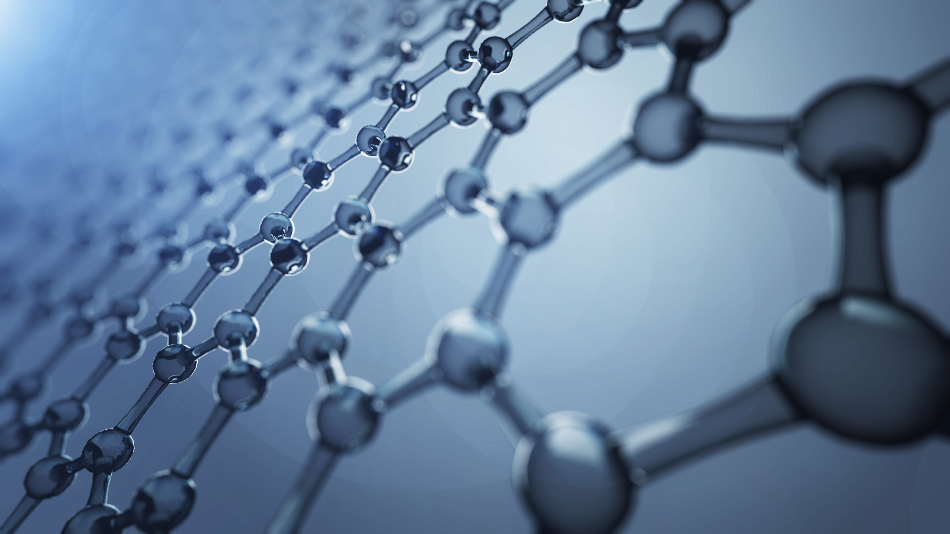
Image Credit: Shutterstock.com / Egorov Artem
In order to make hydrogen fuel cells a viable energy source for the future, material scientists must find a way to integrate this technology with graphene. Until now several hindrances have hampered this union, but new research could be about to change that.
The world currently faces a massive energy-dilemma; whilst demand for power sources and fuel grows, our awareness of the damage these demands cause on the environment grows and our time to act inversely dwindles. This creates a massive demand for a fuel source that is both efficient and clean.
One device suggested for such a role is the hydrogen fuel cell, with graphene as a key component. Research published in the journal Nanoscale promises to address some of the roadblocks that have thus far hindered the development of this clean, non-toxic, renewable, technology, thus opening up hydrogen fuel cells as a potential clean-energy breakthrough.
At the moment the US Department of Energy estimates that the cost of energy generated by hydrogen fuel cells is around $61 per kilowatt. The ultimate aim is to get this down to $30 per kilowatt. The scaling up in the production of graphene-coated nanoparticles suggested in the paper could help significantly in this quest.
The team’s findings could also extend beyond the field of fuel cells, lending itself to some exciting technological applications.
Addressing the Problems Holding Back Graphene-based Hydrogen Fuel Cells
Hydrogen fuel cells are a method of converting chemical energy to electrical energy with only one by-product — water. As such they are not just clean and renewable, but also non-toxic. Such fuel cells rely on what is known as a polymer electrolyte membrane (PEM) to function — a barrier that can simultaneously allow the conduction of protons, separate gases, and electrically insulates the fuel cell’s electrodes.
Of the materials suggested for the construction of such a membrane, referred to as an electrode support material, graphene leads the way. This wonder material — atom-thick sheets of carbon allotropes painstakingly carved from graphite — is resistant to corrosion, is highly conductive, and possesses a large surface area. Factor into this, a high-resistance to acidic conditions and its incredibly light-weight nature and the graphene/ fuel cell combination seems like a match made in heaven.
But, there are still major problems that stand in the way of the widespread adoption of graphene-based hydrogen fuel cell technology. Graphene-based electrodes can suffer from high-defect concentrations arising from a non-uniform coverage of nanoparticles, both of which can negatively impact performance. This problem only gets worse during the cell’s lifecycle and nanoparticles get stripped from the graphene.
There is also another, fairly significant issue; graphene production is difficult to ‘scale-up’ to the kind of industrial levels required in order to make such fuel cells a major force in the energy market. This means that despite graphene being relatively abundant and easy to derive from graphite, fuel cells that utilize it aren’t cheap to manufacture.
The study authored by Gyen Ming Angel, part of the Electrochemical Innovation Lab, Department of Chemical Engineering, University College London, and his colleagues, addresses these problems.
Scalability and Stability
The solution the team put forward involves the creation of platinum nanoparticles coated with layers of graphene. Such particles, suggest the team, are of the optimal dimensions to be uniformly dispersed across a surface. In this way, they can be used to coat an electrode in such a way that efficiency drops are all but eliminated.
This results in high catalytic activity, with the graphene’s durability providing remarkable stability over an operating lifetime of 30,000 charge/ recharge cycles.
The team’s research represents the first time that uniformly scaled platinum nanoparticles have been grown on graphene support with low defects. The team believes that the method they utilized, combined with the synthesis of charged graphene dispersion using what is known as the “metal-ammonia” method, makes their technology scalable.
Promisingly, in tests conducted thus far, their advancement seems to be matching both the performance and mechanism of a highly-optimized commercial platinum/carbon catalysts, whilst actually outperforming them in terms of stability.
What makes this synthesis method extra exciting is the fact that the team believes it can be turned to spreading different metals across a graphene structure. With these different metals comes the possibility of adapting to a variety of different applications. This could extend beyond just fuel cells and catalyst systems, to devices such as sensors and supercapacitors.
Sources and Further Reading
Gyen Ming A. Angel, Normalina Mansor, Rhodri Jervis, et al, [2020], ‘Realising the electrochemical stability of graphene: scalable synthesis of an ultra-durable platinum catalyst for the oxygen reduction reaction,’ Nanoscale, [https://pubs.rsc.org/en/content/articlelanding/2020/NR/D0NR03326J#!divAbstract]
‘Fuel Cells,’ Institue of Physics, https://www.iop.org/resources/topic/archive/fuel/index.html#gref
Disclaimer: The views expressed here are those of the author expressed in their private capacity and do not necessarily represent the views of AZoM.com Limited T/A AZoNetwork the owner and operator of this website. This disclaimer forms part of the Terms and conditions of use of this website.